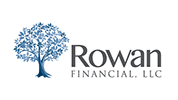9 Strategies for Successful Rental Real Estate Investing

For a variety of reasons, the rate of home ownership in the United States is declining at a steady rate. Since 2006, home ownership has declined from 70% of the population to 64%. With roughly 329 million people in the country as of October 2018, this leaves approximately 118 million citizens who are looking to rent if they can afford it, or seeking other financially assisted housing options.
With this in mind, it has never been a better time to invest in real estate rentals and this article covers nine essential strategies to get you started.
Strategy #1 – Define Your Target Renter
There are many different types of renters out there. These include:
- Young professionals early in their careers.
- Families with kids
- Retirees who want a place that they can live independently with much less upkeep than a home.
- Lower income tenants looking for efficiencies or even in some cases individual rooms to rent.
Deciding who your target renter is will help you decide where to look and what kind of property to buy for your first purchase of investment real estate.
Strategy #2 – Assess the Local Market
Once you’ve chosen your target renter, begin your assessment of the local real estate market. The quickest way to do this is to go on any of the online real estate valuation sites and type in a zip code that you are interested in, then further defining your search in terms of number of bedrooms, number of baths, price or square footage. Three sites that allow you to search in this manner include Zillow, Trulia and Redfin.
I prefer to work with a realtor when I’m assessing a new market. You can provide your realtor with all of your search criteria and they can set up the search for you. What I love about this approach is that you get an automatic notice in your email inbox when a new property comes online that meets your search criteria. This is great because you don’t need to go in and search manually each time like you do with the three sites listed above and, if it’s an aggressively priced listing, you can get out there right away to see it.
Strategy #3 – Form an LLC
Owning rental real estate does not come without risk. Tenants can hurt themselves or become disgruntled for a variety of other reasons and you need to shield your personal assets from a potential lawsuit by forming an LLC. You can either take a do-it-yourself approach or hire a company such as Northwest or LegalZoom to help you with the process. Both are very reasonable and charge $49-$149 plus state filing fees to get you off and running.
Even though it is more expensive, there are times you may want to consider hiring an attorney. One such instance is if you are working with a partner in your rental real estate business and you need to specifically spell out what happens if one partner passes away or becomes incapacitated for a long period of time. You do not want to be forced into a situation where family members of that partner can force a fire sale of half the properties owned by the partnership to quickly claim their portion of the businesses. The agreement needs to be fair to both the surviving partner and the family of the deceased/incapacitated partner.
Strategy #4 – Network with Local Real Estate Professionals
To be successful at rental real estate investing, you will need to interact and work with a wide variety of professionals. Your best bet is to connect with your local chapter of the National Real Estate Investors Association. This is the go to place to find the connections you need in this industry. The types of people who typically attend meetings include beginning investors like you, seasoned investors, real estate brokers and agents, attorneys, property managers, renovation specialists, bankers and wholesalers. You won’t necessarily need contacts in all of these areas, but you will need to form a high-performing, competent team to help you be successful and this is a great place to start.
Strategy #5 – Find Mechanisms to Identify Properties Priced Below Market Value
When you are attending your National REIA meetings, seek out pros that can help you find properties below market value. Personally I have worked with property managers, realtors and wholesalers who have all been great sources of below market deals.
These people are often real estate investors themselves, and if they happen to be at a point that all of their capital is tied up, they are often more than happy to pass deals that they can’t take on to you.
Strategy #6 – Assess the Financials of Potential Deals
At this point you have established the foundation of your rental real estate business and now it’s time to begin assessing potential deals. It is critical that your model takes into account ALL potential costs associated with the purchase and ongoing maintenance of your property. These include:
- Down payment and closing costs money
- Rehab costs – always add 20% to this estimate
- Debt service
- Insurance costs
- Taxes
- Maintenance Costs
- Vacancy Rates
Some investors are happy to find properties that will cover the mortgage so that they can build equity for free over a long period of time. I, on the other hand, look for deals that provide immediate cash flow from day 1. Consider setting a minimum you will accept in terms of the annual positive cash flow that a property will generate because it takes just as much time and effort to buy and maintain a property that makes $500 per year in cash than it does to maintain one that makes $5,000 per year.
Make this an unemotional part of your process. If it meets your financial metrics buy it. If it doesn’t, let the property go and move on to assessing the next deal.
Strategy #7 – Identify Sources of Funding and Buying Your First Deal
You are essentially ready to buy properties if you have completed steps 1-6 above. Now you need to figure out how you will finance your purchases. If you have met local bankers at one of your National REIA meetings this is a great place to start. However, traditional banks often have strict lending standards and do not necessarily have the best terms for real estate investors.
I have found good success with local credit unions as initial lenders on my first few deals, often offering lower interest rates and better terms. Be prepared to spend many hours going through the process of applying for this loan as they will often want to see back tax returns, bank statements and a personal financial statement among other things.
Also, for your first few deals, be prepared to not get the best terms in the way of interest rates as well as the percentage of the deal the lender will finance. You can expect your first deal in many cases to get funded at a Loan to Value (LTV) Ratio of 60-70% and once you are a more seasoned investor, you may be offered LTV’s of 75-80%.
To finance down payments, rehab costs or smaller deals, a Home Equity Line of Credit (HELOC) is a great tool. You can borrow against the equity in your home at very low interest rates and receive a tax deduction for any interest paid.
If you are having difficulty obtaining traditional bank financing, you can consider raising private money for your first few deals. This money can come from family, friends, neighbors or co-workers. You’ll need to spend time educating these people on what you are doing, showing them the financials you are looking at for the deal you want to fund and offering attractive interest rates 3-5% above what a traditional lending institution would charge to reward them for the risk they are taking on to fund your business.
Strategy #8 – Put Together a Great Team
Before buying your first deal, make sure you have a great team in place to ensure the ongoing success of your deal. Key team members include a good general contractor for any major rehab work, a maintenance man for day-to-day repairs and a property manager who knows not only how to collect rents, but also how to quickly fill vacancies in any properties that you own.
Strategy #9 – Stay Adequately Capitalized
Rental real estate investing can be exciting. However, as many real estate investors discovered in 2007, prices can quickly reverse which can lead to financial ruin for those who are over-leveraged. At a minimum, keep at least six months of living expenses in the bank and consider designating another pool of money to cover large, unexpected maintenance expenses on one or more of your properties.
Good luck with your rental real estate investing and feel free to comment below with any additional tips you think will help new investors!

